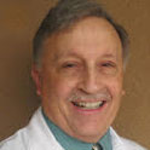The dental profession has recently witnessed a growing utilization of teledentistry, largely due to the pandemic. When direct doctor/patient encounters are not feasible, teledentistry provides a viable option. This may include afterhours emergency dental pain and swelling, or a consult with a dental specialist in real time for an initial clinical assessment and triage. Teledentistry can facilitate dental care for patients confined during a health-care lockdown or quarantine.
Unfortunately, teledentistry can also be abused, by facilitation of unlicensed personnel to generate dental exams, treatment plans, and treatment without any real doctor involvement beyond a sham shadow signoff.
What the experts say
In order for me to gain a better understanding of teledentistry, I interviewed two industry leaders. Todd Gray, DDS, is a pediatric dentist and chief dental officer for teledentistry.com, and William Jackson, DDS, is cofounder and chief operating office for Virtual Dental Care Inc.
“We provide real-time emergency exams with a state licensed dentist,” said Dr. Gray. “Our main priority is to offer around-the-clock emergency consultations for patients. We have state-specific licensed dentists who are available to respond to a patient request and provide a live, virtual video examination. Our doctors generate an initial diagnosis, recommend treatment, and ease patient concerns. We’re able to prescribe antibiotics and nonopiod analgesics, and patients are then scheduled to see a nearby dentist for definitive, follow-up care by our support team.
“We operate on a patent-pending ‘Uberized’ system, which ensures that a dentist is available 24/7 to provide a consultation within minutes of the patient request,” he added. “Our platform is accessible using any internet-enabled device such as phone, tablet, or desktop computer.”
“Virtual Dental Care Inc. is a company whose founding principle is to use teledentistry as a key means of addressing delivery of care to the underserved,” Dr. Jackson said. “We have subsequently expanded the use-cases significantly, but the vision has not changed. Telecommunication tools, much more than just one-on-one video, have developed during the last few years, substantially increasing the capabilities of professionals, teams of professionals, and patients to collaborate like no other time in history.”
Dr. Gray added specifics about the mechanisms that lower health-care costs, both on the dental and medical sides, via emergency room divergence. “We have a proven track record of decreasing unnecessary and costly emergency room visits by dental patients.”
Particular to high-risk children in rural areas, Dr. Jackson said patients are shipped fluoride varnish kits while a dentist remotely ensures it is applied correctly in live time. Similar success was reported with dental exams.
Dr. Gray pointed to the benefits achieved by patients in nursing homes and skilled care facilities. As to value-based programs, he cited advantages of nutritional counseling and motivational visits between regularly scheduled exams.
The dental profession and state regulators, through state dental boards, have struggled to differentiate teledentistry firms that operate ethically and follow state statutes versus those that bypass ethics and law to maximize profits through the unlicensed practice of dentistry. Apparent conflicts of interest have arisen.1 Senior leadership in the teledentistry industry has purportedly been called into question for ethical breaches.2 Others are facing lawsuits.3
Dr. Gray said, “The same standards and expectations should be applied to teledentistry that apply to brick-and-mortar dental offices. This includes following established privacy laws, proper training and licensure of dentists, appropriate credentialing of providers, documentation of treatment, and appropriate referral for follow-up/definitive care. Additionally, individual state dental boards should oversee and monitor teledentistry providers and services as they would any traditional dental provider.”
Dr. Jackson concluded with an interesting perspective. He opined that regulators should focus on the problem, which is “delivery of care without professional supervision, and not the tool (teledentistry) that supports the illegal activity. You can stop drunken driving deaths by eliminating cars, but that is hardly the point.”
References
1. Davis M. Op Ed: Sponsor transparency (conflict of interest?) and the AADB meeting. DentistryIQ. March 10, 2021. https://www.dentistryiq.com/practice-management/industry/article/14199014/op-ed-sponsor-transparency-conflict-of-interest-and-the-aadb-meeting
2. Caldera CG. In letter to Harvard president, assoc. dental school professor criticized for involvement in teledentistry. The Crimson. January 4, 2020. https://www.thecrimson.com/article/2020/1/4/dental-prof-controversy/
3. Before the dental board of California Department of Consumer Affairs State of California. Reuters. November 12, 2019. https://graphics.reuters.com/USA-SMILE-DENTIST/0100B5EB3L7/AccusationDocument.pdf
Michael W. Davis, DDS, maintains a general dentistry practice in Santa Fe, New Mexico. He chairs his district dental society peer review committee and is involved in state dental association issues. He is also active with consultation and expert witness work for a variety of attorneys. Dr. Davis may be reached at [email protected] or on his website, SmilesofSantaFe.com.







